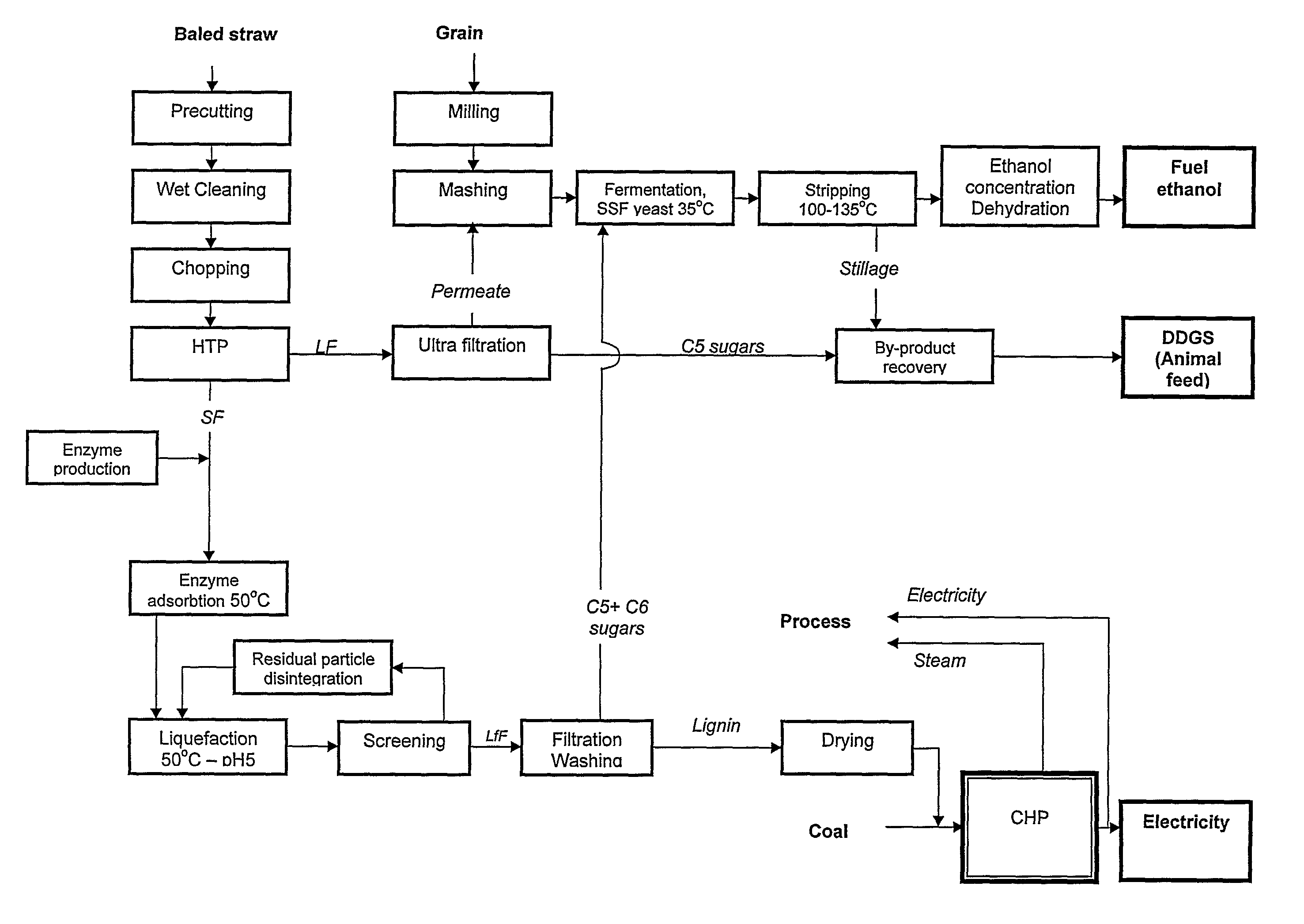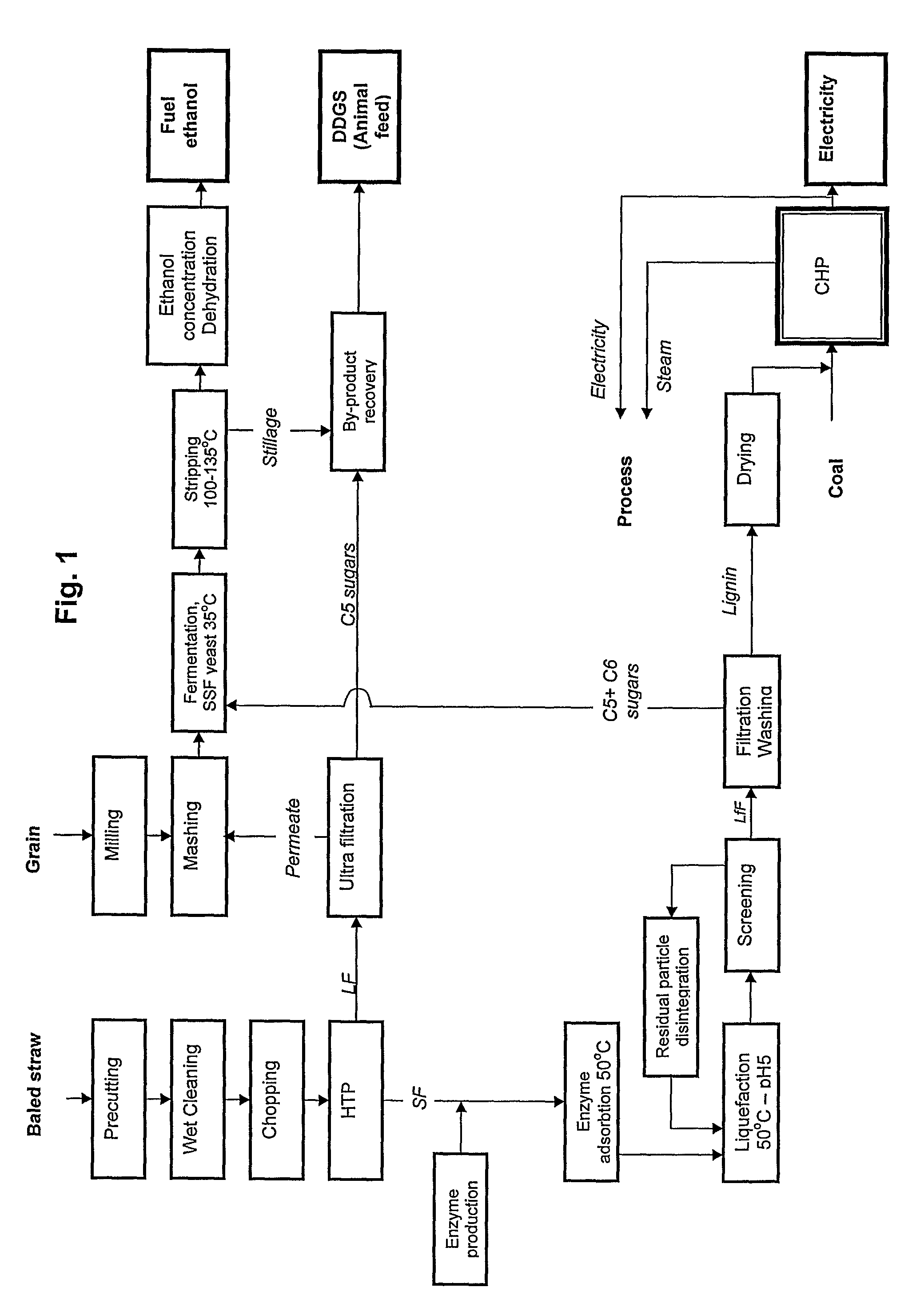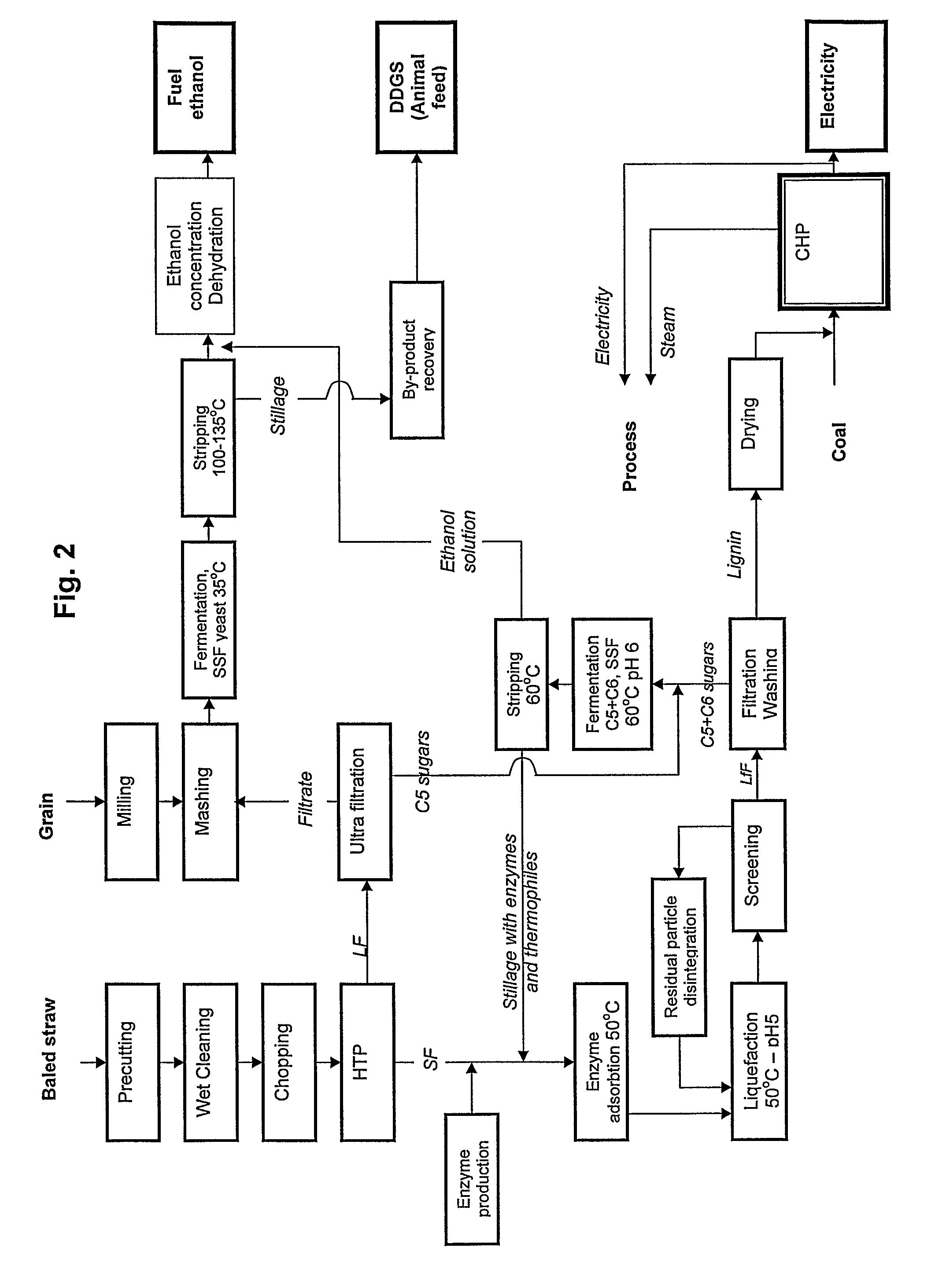Method and apparatus for conversion of cellulosic material to ethanol
a cellulosic material and ethanol technology, applied in the field of cellulosic material conversion to ethanol, can solve the problems of large energy consumption, difficult liquid removal, and large proportion of the prior art only tested
- Summary
- Abstract
- Description
- Claims
- Application Information
AI Technical Summary
Benefits of technology
Problems solved by technology
Method used
Image
Examples
example
Conversion of Wheat Straw
[0153]The conversion method of the invention has been tested on chopped wheat straw at pilot plant facilities comprising wet cleaning and chopping of straw, pre-soaking and pressurized pre-treatment in a reactor with two sections, with a first particle pump to load the soaked feedstock into the first section, and a second particle pump to transfer the feedstock into the second section, and a third particle pump to unload the fibre fraction from the second section. The particle pumps used in the pilot plant are described in WO 03 / 013714A1. This means, that three soaking-pressing operations could be conducted, using the particle pumps for the pressing process. In addition a washing step at ambient pressure was tested, by which the fibre fraction after soaking was pressed to around 40% dm with a screw press.
[0154]Evaluation of the effect of different pre-treatment conditions was based on data from downstream liquefaction, ethanol fermentation and distillation t...
PUM
| Property | Measurement | Unit |
|---|---|---|
| temperatures | aaaaa | aaaaa |
| temperatures | aaaaa | aaaaa |
| temperatures | aaaaa | aaaaa |
Abstract
Description
Claims
Application Information
 Login to View More
Login to View More - R&D
- Intellectual Property
- Life Sciences
- Materials
- Tech Scout
- Unparalleled Data Quality
- Higher Quality Content
- 60% Fewer Hallucinations
Browse by: Latest US Patents, China's latest patents, Technical Efficacy Thesaurus, Application Domain, Technology Topic, Popular Technical Reports.
© 2025 PatSnap. All rights reserved.Legal|Privacy policy|Modern Slavery Act Transparency Statement|Sitemap|About US| Contact US: help@patsnap.com



